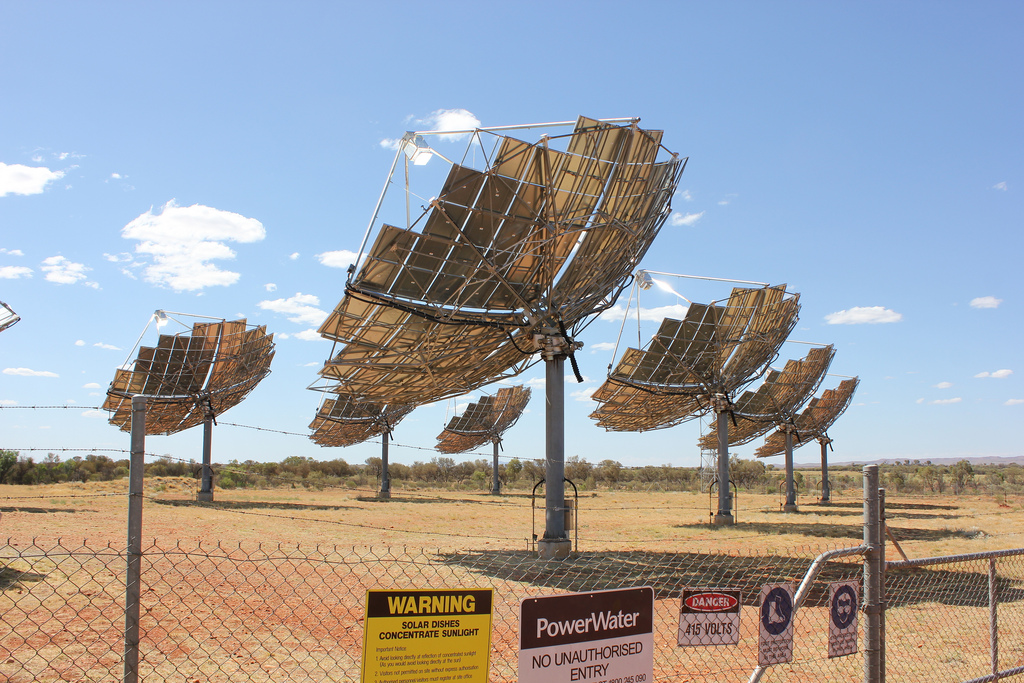Intense speculation over the Abbott government’s real intentions surrounding the potential scrapping of the Renewable Energy Target (RET) have sent shock waves through the local government sector.
Councils now fear they will struggle badly to manage future peak electricity demand and control runaway electricity costs in future heatwaves that could blow big holes in budgets if the plug is pulled on the target.
Following reports that the scrapping of the RET was on the table, Finance Minister Mathias Cormann was pressed into making assurances on Monday that the Coalition would “keep the renewable energy target in place”, despite strong reports that Prime Minister Tony Abbott wants to dump it or scale it back.
The rub for already nervous councils is that the hundreds of millions of dollars in time and money already sunk into renewable energy could be squandered and force them to deal with extreme weather without projected additional renewable energy capacity.
The RET aims to source 20 per cent of Australia’s electricity from renewable sources, such as solar, wind, hydro and organic matter like rubbish, wood or plant waste, by 2020.
The RET review, led by outspoken businessman Dick Warburton, has prompted flurry of submissions, many from councils, who strongly argue that ditching the renewables target is counterproductive.
The City of Melbourne, which sweltered under a record January heatwave this year that belted the metropolis with four consecutive days over 40c degrees, told the review that renewable energy sources like wind energy and solar power had proved “critical” in keeping energy costs down and reducing the need for expensive generators during the heatwave.
“The supply of higher rates of renewable energy into the grid was seen as critical to reducing energy costs during the 2014 summer heatwaves in Melbourne, which are traditionally the most expensive generating periods,” the City of Melbourne review submission said.
The City, which has a target of 25 per cent of its electricity from renewable sources by 2018, added that the RET was valuable because it exerted downward pressure on wholesale electricity prices, particularly at peak times, because there was more competition in the energy supply market with lower generation costs.
Long-term sustainability advocate the City of Sydney, which has a target of 30 per cent of its electricity coming from renewables by 2030, said the RET “should not be diluted” and should instead remain the centrepiece of renewable energy policy.
“The review panel should refer to research by the REC [Renewable Energy Company] Agents Association which shows that solar power PV [photovoltaic] output contributed to reducing the peak demand [by] 5 per cent during recent heatwaves in South Australia and Victoria.”
The report shows that residential solar PV generated more than 9 per cent of South Australia’s peak afternoon demand and nearly 3 per cent of Victoria’s demand during the January heatwave.
At times of lower demand, solar PV produced nearly 25 per cent of South Australia’s
afternoon electricity demand and 6 per cent of Victoria’s.
But local councils are not only fretting about their ability to ride out heatwaves if the RET is dumped, but about the negative effect it could have on local economies.
Moree Plains Shire Council, in Northern NSW, said multiple large-scale projects promised to regional areas might never come to fruition, such as the $200 million Moree Solar Farm Project.
The council’s review submission said: “We believe that if the RET review results in a reduction of the 2020 target, this project and other similar projects would be in jeopardy….and would be a massive blow to the economy.”
Meanwhile, Sunshine Coast Council in Queensland said that losing the RET could threaten the viability of its new project a utility scale solar power farm which was to supply all the council’s future energy needs and cut costs.
The council said in its submission: “Given that marginal electricity capacity and electricity pricing is largely set by natural gas fired power stations and that Australia is looking to develop a strong gas export market, the real risk remains that natural gas pricing could be subject to price shocks, driving the cost of electricity significantly higher.”
It said renewables, solar in particular, could act as a “natural hedge against natural gas price risk” and help protect councils and residents from price shocks. Removing the RET would exacerbate these risks, said the council.
Bathurst Regional Council in NSW said renewable energy was one way of balancing manufacturing job losses and ageing coal infrastructure amid rising gas and coal prices.
“Weakening the RET will further undermine confidence in investment in renewable energy generation in both large and small scale situations,” said the central NSW council.
“Central NSW has opportunities for many hundreds of millions of dollars of investment – particularly in wind farms but also large scale solar in this region and council is clear in wanting to drive these opportunities for investment when manufacturing, food processing and similar industries are closing or downsizing.”
Willoughby Council, on Sydney’s Lower North Shore, has already committed cash to installing more than 234kw of commercial solar PV, generating 333MW of electricity a year, including an award winning 133KW solar farm.
Noatbly, the area is within the federal electorate of North Sydney that is held by Treasurer Joe Hockey.
Council submissions were also in favour of making RET reviews every four years, not two, to make planning and investment easier.
Comment below to have your say on this story.
If you have a news story or tip-off, get in touch at editorial@governmentnews.com.au.
Sign up to the Government News newsletter

